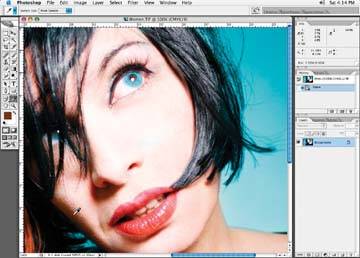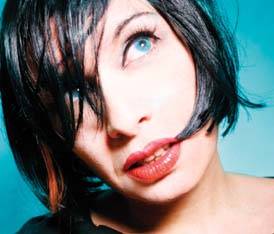You may need to use a four-color shadow when you have natural objects like a human face, for example, where a black-only shadow may look odd, very muddy, or dirty. To create a shadow on a face (or any object made up primarily of cyan, yellow, and magenta), start by taking a reading, as shown in Figure 2-24, of the darkest color in the area you wish to add a shadow to, and use that color as your shadow color.
Figure 2-24. Take a color reading of a dark area of a face for a natural shadow

Figure 2-25. Before: no blush to the cheek

Figure 2-26. After: using a shadow chosen from a color already in the image makes the blush look natural

After choosing this color, brush on a new multiplied layer, again with a very low opacity brush, and build it up until you get the desired look. (I may add a small amount of noise if I feel what I have brushed in looks too smooth and doesn't match the rest of the look of the image.) You can see the before and after images in Figure 2-25 and Figure 2-26, respectively.